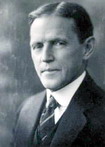PERFECT SIGHT WITHOUT GLASSES
CHAPTER IX
THE CAUSE AND CURE OF ERRORS OF REFRACTION
IT has been demonstrated in thousands of cases that all abnormal action of the external muscles of the ; eyeball is accompanied by a strain or effort to see, and that with the relief of this strain the action of the muscles becomes normal and all errors of refraction disappear. The eye may be blind, it may be suffering from atrophy of the optic nerve, from cataract, or disease of the retina; but so long as it does not try to see, the external muscles act normally and there is no error of refraction. This fact furnishes us with the means by which all these conditions, so long held to be incurable, may be cured.
It has also been demonstrated that for every error of refraction there is a different kind of strain. The study of images reflected from various parts of the eyeball confirmed what had previously been observed, namely, that myopia (or a lessening of hypermetropia) is always associated with a strain to see at the distance, while hypermetropia (or a lessening of myopia) is always associated with a strain to see at the nearpoint; and the fact can be verified in a: few minutes by anyone who knows how to use a retinoscope, provided only that the instrument is not brought nearer to the subject than six feet.
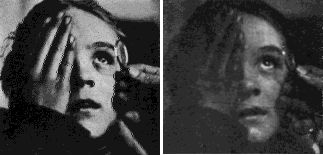
Fig. 34. Straining to See at the Near-Point Produces Hypermetropia
Patient reading fine print in a good light at thirteen inches, the object of vision being placed above the eye so as to be out of the line of the camera. Simultaneous retinoscopy indicated that the eye was focused at thirteen inches. The glass was used with the retinoscope to determine the amount of the refraction.
When the room was darkened the patient failed to read the fine print at thirteen inches and the retinoscope indicated that the eye was focused at a greater distance. When a conscious strain of considerable degree was made to see, the eye became hypermetropic.
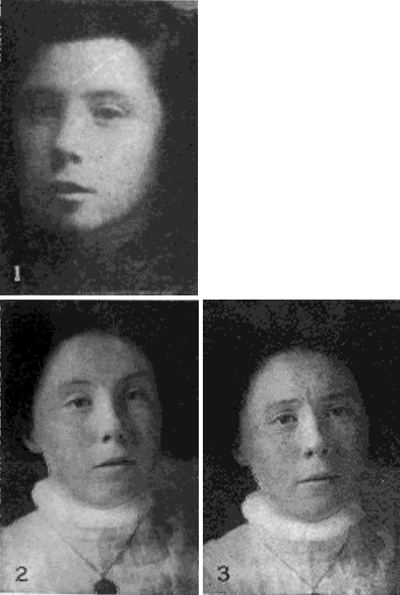
Fig. 35. Myopia Produced by Unconscious Strain to See at the Distance is Increased by Conscious Strain
No. 1.—Normal vision.
No. 2.—Same subject four years later with myopia. Note the strained expression.
No. 3.—Myopia increased by conscious effort to see a distant object.
In an eye with previously normal vision a strain to see near objects always results in the temporary production of hypermetropia in one or all meridians. That is, the eye either becomes entirely hypermetropic, or some form of astigmatism is produced of which hypermetropia forms a part. In the hypermetropic eye the hypermetropia is increased in one or all meridians. When the myopic eye strains to see a near object the myopia is lessened and emmetropia1 may be produced, the eye being focussed for parallel rays while still trying to see at the near-point. In some cases the emmetropia may even pass over into hypermetropia in one or all meridians. All these changes are accompanied by evidences of increasing strain, in the form of eccentric fixation see Chapter XI) and lowered vision; but, strange to say, pain and fatigue are usually relieved to a marked degree. If, on the contrary, the eye with previously normal vision strains to see at the distance, temporary myopia is always produced in one or all meridians, and if the eye is already myopic, the myopia is increased. If the hypermetropic e y e strains to see a distant object, pain and fatigue may be produced or increased; but the hypermetropia and the eccentric fixation are lessened and the vision improves. This interesting result, it will be noted, is the exact contrary of what we get when the myope strains to see at the near-point. In some cases the hypermetropia is completely relieved, and emmetropia is produced, with a complete disappearance of all evidences of strain. This condition may then pass over into myopia, with an increase of strain as the myopia increases.
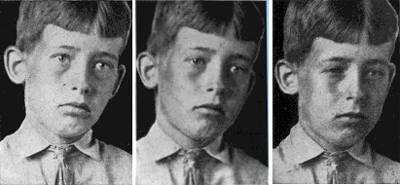
Fig. 36. Immediate Production of Myopia and Myopic Astigmatism in Eyes Previously Normal by Strain to See at the Distance
No. 1.—Boy reading the Snellen test card with normal vision. Note the absence of facial strain.
No. 2.—The same boy trying to see a picture at twenty feet. The effort, manifested by staring, produces compound myopic astigmatism, as revealed by the retinoscope.
No. 3.—The same boy making himself myopic voluntarily by partly closing the eyelids and making a conscious effort to read the test card at ten feet.
In other words the eye which strains to see at the nearpoint becomes flatter than it was before, in one or all meridians. If it was elongated to start with, it may pass rom this condition through emmetropia, in which it is spherical, to hypermetropia, in which it is flattened; and if these changes take place unsymmetrically, astigmatism will be produced in connection with the other conditions. The eye which strains to see at the distance, on the contrary, becomes longer than it was before in one or all meridians, and may pass from the flattened condition of hypermetropia, through emmetropia, to the elongated condition of myopia. If these changes take place unsymmetrically, astigmatism will again be produced in connection with the other conditions.
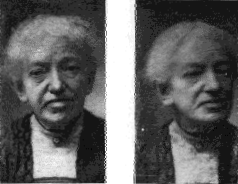
Fig. 37. Myopic Astigmatism Comes and Goes According as the Subject Looks at Distant Objects With or Without Strain
No. 1.—Patient regarding the Snellen test card at ten feet without effort and reading the bottom line with normal vision.
No. 2.—The same patient making an effort to see a picture at twenty feet. The retinoscope indicated compound myopic astigmatism.
What has been said of the normal eye applies equally to eyes from which the lens has been removed. This operation produces usually a condition of hypermetropia; but when there has previously been a condition of high myopia the removal of the lens may not be sufficient to correct it, and the eye may still remain myopic. In the first case a strain to see at the distance lessens the hypermetropia, and a strain to see at the near-point increases it; in the second a strain to see at the distance increases the myopia, and a strain to see at the nearpoint lessens it. For a longer or shorter period after the removal of the lens many aphakic eyes strain to see at the near-point, producing so much hypermetropia that the patient cannot read ordinary print, and the power of accommodation appears to have been completely lost. Later, when the patient becomes accustomed to the situation, this strain is often relieved, and the eye becomes able to focus accurately upon near objects. Some rare cases have also been observed in which a measure of good vision both for distance and the nearpoint was obtained without glasses, the eyeball elongating sufficiently to compensate, to some degree, for the loss of the lens.
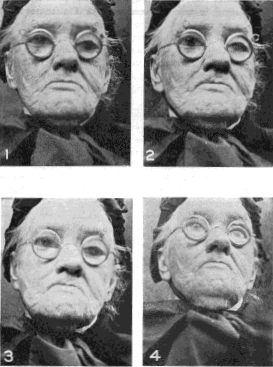
Fig. 38. This Patient Had Had the Lens of the Right Eye Removed for Cataract and Was Wearing an Artificial Eye in the Left Socket. The Removal of the Lens Created a Condition of Hypermetropia Which Was Corrected by a Convex Glass of Ten Diopters
No. 1.—The patient is reading the Snellen test card at twenty feet with normal vision.
No. 2.—She is straining to see the test card at the same distance, and her hypermetropia is lessened by two diopters so that her glass now overcorrects it and she cannot see the card perfectly.
No. 3.—With a convex reading glass of thirteen diopters the right eye is focussed accurately at thirteen inches.
No. 4.—The patient is straining to see at the same distance and her hypermetropia is so increased that in order to read she would require a glass of fifteen diopters. On the basis of the accepted theory that the power of accommodation is wholly destroyed by the removal of the lens these changes in the refraction would have been impossible. The experiment was repeated several times and it was found that the error of refraction produced by straining to see varied, being sometimes more and sometimes less than two diopters.
The phenomena associated with strain in the human eye have also been observed in the eyes of the lower animals. I have made many dogs myopic by inducing them to strain to see a distant object. One very nervous dog, with normal refraction, as demonstrated by the retinoscope, was allowed to smell a piece of meat. He became very much excited, pricked up his ears, arched his eyebrows and wagged his tail. The meat was then removed to a distance of twenty feet. The dog looked disappointed, but didn't lose interest. While he was watching the meat it was dropped into a box. A worried look came into his eyes. He strained to see what had become of it, and the retinoscope showed that he had become myopic. This experiment, it should be added, would succeed only with an animal possessing two active oblique muscles. Animals in which one of these muscles is absent or rudimentary are unable to elongate the eyeball under any circumstances.
Primarily the strain to see is a strain of the mind, and, as in all cases in which there is a strain of the mind, there is a loss of mental control. Anatomically the results of straining to see at a distance may be the same as those of regarding an object at the near point without strain; but in one case the eye does what the mind desires, and in the other it does not.
These facts appear sufficiently to explain why visual acuity declines as civilization advances. Under the conditions of civilized life men's minds are under a continual strain. They have more things to worry them than uncivilized man had, and they are not obliged to keep cool and collected in order that they may see and do other things upon which existence depends. If he allowed himself to get nervous, primitive man was Promptly eliminated; but civilized man survives and transmits his mental characteristics to posterity. The lower animals when subjected to civilized conditions respond to them in precisely the same way as do human creatures. I have examined many domestic and menagerie animals, and have found them, in many cases, myopic, although they neither read, nor write, nor sew, nor set type.
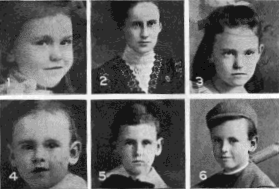
Fig. 39. A Family Group Strikingly Illustrating the Effect of the Mind Upon the Vision
No. 1.—Girl of four with normal eyes.
No. 2.—The child's mother with myopia.
No. 3.—The same girl at nine with myopia. Note that her expression has completely changed, and is now exactly like her mother's.
Nos. 4, 5 and 6.—The girl's brother at two, six and eight. His eyes are normal in all three pictures. The girl has either inherited her mother's disposition to take things hard, or has been injuriously effected by her personality of strain. The boy has escaped both influences. In view of the prevailing theories about the relation of heredity to myopia, this picture is particularly interesting.
A decline in visual acuity at the distance, however, is no more a peculiarity of civilization than is a similar decline at the near-point. Myopes, although they see better at the near-point than they do at the distance, never see as well as does the eye with normal sight; and in hypermetropia, which is more common than myopia, the sight is worse at the near-point than at the distance.
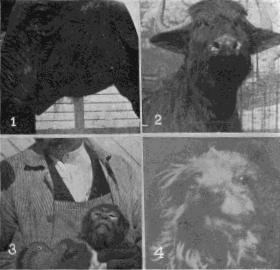
Fig. 40. Myopes Who Never Went to School, or Read in the Subway
No. 1.—Myopic elephant in the Central Park Zoo, New York thirtynine years old. Young elephants and other young animals were found to have normal vision.
No. 2.—Cape buffalo with myopia, Central Park Zoo.
No. 3.—Myopic monkey, also in the Central Park Zoo.
No. 4.—Pet dog with myopia which progressed from year to year.
The remedy is not to avoid either near work or distant vision, but to get rid of the mental strain which underlies the imperfect functioning of the eye at both points; and it has: been demonstrated in thousands of cases that this can always be done.
Fortunately, all persons are able to relax under certain conditions at will. In all uncomplicated errors of refraction the strain to see can be relieved, temporarily, by having the patient look at a blank wall without trying to see. To secure permanent relaxation sometimes requires considerable time and much ingenuity. The same method cannot be used with everyone. The ways in which people strain to see are infinite, and the methods used to relieve the strain must be almost equally varied. Whatever the method that brings most relief, however, the end is always the same, namely relaxation. By constant repetition and frequent demonstration and by all means possible, the fact must be impressed upon the patient that perfect sight can be obtained only by relaxation. Nothing else matters.
Most people, when told that rest, or relaxation, will cure their eye troubles, ask why sleep does not do so. The answer to this question was given in Chapter VII. The eyes are rarely, if ever, completely relaxed in sleep, and if they are under a strain when the subject is awake, that strain will certainly be continued during sleep, to a greater or less degree, just as a strain of other parts of the body is continued.
The idea that it rests the eyes not to use them is also erroneous. The eyes were made to see with, and if when they are open they do not see, it is because they are under such a strain and have such a great error of refraction that they cannot see. Near vision, although accomplished by a muscular act, is no more a strain on them than is distant vision, although accomplished without the intervention of the muscles. The use of the muscles does not necessarily produce fatigue. Some men can run for hours without becoming tired. Many birds support themselves upon one foot during sleep, the toes tightly clasping the swaying bough and the muscles remaining unfatigued by the apparent strain. Fabre tells of an insect which hung back downward for ten months from the roof of its wire cage, and in that position performed all the functions of life, even to mating and laying its eggs. Those who fear the effect of civilization, with its numerous demands for near vision, upon the eye may take courage from the example of this marvelous little animal which, in a state of nature, hangs by its feet only at intervals, but in captivity can do it for ten months on end, the whole of its life's span, apparently without inconvenience or fatigue.2
The fact is that when the mind is at rest nothing can tire the eyes, and when the mind is under a strain nothing can rest them. Anything that rests the mind will benefit the eyes. Almost everyone has observed that the eyes tire less quickly when reading an interesting book than when perusing something tiresome or difficult to comprehend. A schoolboy can sit up all night reading a novel without even thinking of his eyes, but if he tried to sit up all night studying his lessons he would soon find them getting very tired. A child whose vision was rdinarily so acute that she could see the moons of Jupiter with the naked eye became myopic when asked to do a sum in mental arithmetic, mathematics being a subject which was extremely distasteful to her. Sometimes the conditions which produce mental relaxation are very curious. One patient, for instance, was able to correct her error of refraction when she looked at the test card with her body bent over at an angle of about forty-five degrees, and the relaxation continued after she had assumed the upright position. Although the position was an unfavorable one, she had somehow got the idea that it improved her sight, and therefore it did so.
The time required to effect a permanent cure varies greatly with different individuals. In some cases five, ten, or fifteen minutes is sufficient, and I believe the time is coming when it will be possible to cure everyone quickly. It is only a question of accumulating more facts, and presenting these facts in such a way that the patient can grasp them quickly. At present, however, it is often necessary to continue the treatment for weeks and months, although the error of refraction may be no greater nor of longer duration than in those cases that are cured quickly. In most cases, too, the treatment must be continued for a few minutes every day to prevent relapse. Because a familiar object tends to relax the strain to see, the daily reading of the Snellen test card is usually sufficient for this purpose. It is also useful, particularly when the vision at the near-point is imperfect, to read fine print every day as close to the eyes as it can be done. When a cure is complete it is always permanent; but complete cures, which mean the attainment, not of what is ordinarily called normal sight, but of a measure of telescopic and microscopic vision, re very rare. Even in these cases, too, the treatment can be continued with benefit; for it is impossible to place limits to the visual powers of man, and no matter how good the sight, it is always possible to improve it.
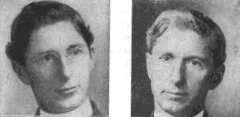
Fig. 41. One of Many Thousands of Patients Cured of Errors of Refraction by the Methods Presented in This Book
No. 1.—Man of thirty-six, 1902, wearing glasses for myopia. Note the appearance of effort in his eyes. He was relieved in 1904 by means of exercises in distant vision and obtained normal sight without glasses.
No. 2.—The same man five years later. No relapse.
Daily practice of the art of vision is also necessary to revent those visual lapses to which every eye is liable, no matter how good its sight may ordinarily be. It is true that no system of training will provide an absolute safeguard against such lapses in all circumstances; but the daily reading of small distant, familiar letters will do much to lessen the tendency to strain when disturbing circumstances arise, and all persons upon whose eyesight the safety of others depends should be required to do this.
Generally persons who have never worn glasses are more easily cured than those who have, and glasses should be discarded at the beginning of the treatment. When this cannot be done without too great discomfort, or when the patient has to continue his work during the treatment and cannot do so without glasses, their use must be permitted for a time; but this always delays the cure. Persons of all ages have been benefited by this treatment of errors of refraction by relaxation; but children usually, though not invariably, respond much more quickly than adults. If they are under twelve years of age, or even under sixteen, and have never worn glasses, they are usually cured in a few days, weeks, or months, and always within a year, simply by reading the Snellen test card every day.
1. Emmetropia (from the Greek emmetros, in measure and ops, the eye) is that condition of the eye in which it is focussed for parallel rays This constitutes normal vision at the distance but is an error of refraction when it occurs at the near-point.
2. The Wonders of Instinct. English translation by de Mattos and Miall, 1918, pp. 36-38.
